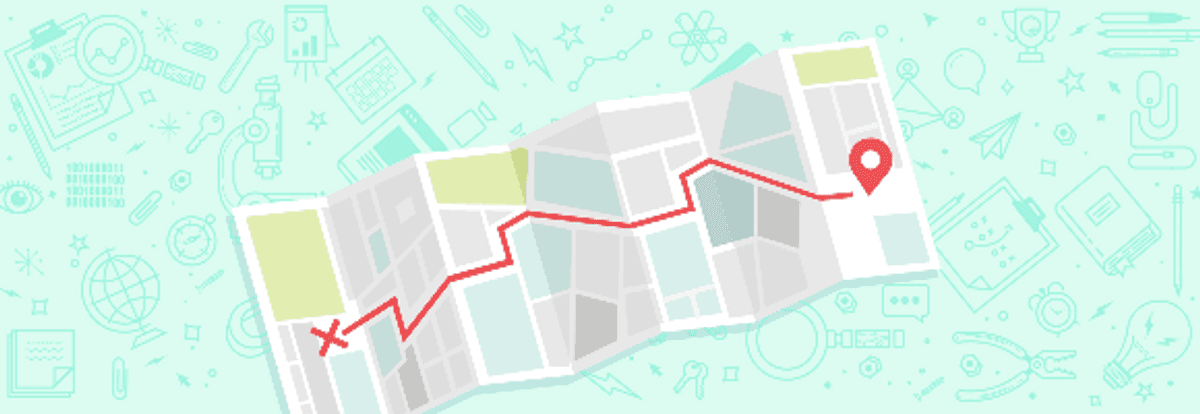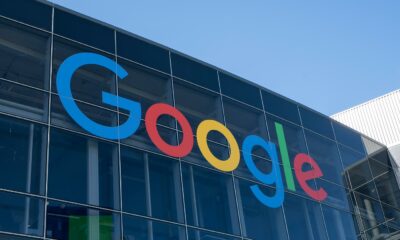MARKETING
How to Build Effective Location Pages

The author’s views are entirely his or her own (excluding the unlikely event of hypnosis) and may not always reflect the views of Moz.
Location pages are an important part of multi-location SEO for enterprises and SMBs alike, but they aren’t easy to get right. At best, they should give potential customers zero excuse to choose a competing business. Often, though, they struggle to provide unique value and offer essentially the same information as the home or service pages — but with a different city in the H1 and meta title.
This happens because unique content is hard to come by when every location does or sells the same thing.
The question isn’t, “How should I go about creating an awesome location page?”, but rather, “Am I giving customers enough unique value to even justify this page in the first place?”
If the answer is “no,” it’s time to find new opportunities for valuable content. Read on for ways to determine whether you’re offering unique value for your location pages, and how to make them better.
Is your content actually unique?
When it comes to building awesome location pages that will impress your customers and search engines, content is your most powerful tool. And I’m not just talking about words-on-a-page, paragraph-form content. Content is any information on your page, in any medium.
Regardless of the way you communicate to customers (text-based content, video, images, etc.), location page content will fall into one of three buckets:
1. Boilerplate
Boilerplate content can be copied and pasted across all locations and remain accurate. A brand’s mission statement falls into this category, for example. The good thing about boilerplate content is it doesn’t require much work to implement. It also doesn’t provide the unique value we’re looking for.
As a rule of thumb, use boilerplate content when it’s necessary (and it will be) but avoid creating pages where the majority of content falls into this category.
2. Technically “unique”
Let’s say you want to avoid duplicate content across location pages so you rewrite the same information (business description, services, etc.) over and over again. Voila! It’s unique, right?
Not exactly.
Technically, it’s unique — but it’s not saying anything new about that location. (Hence the quotation marks.) In other words, the content isn’t duplicative, but it’s also not that valuable. You’re simply using different words to relay the same message.
This type of content is, in my opinion, the worst of the three because it takes manual effort to create but isn’t more helpful to customers than copy-and-pasting the source material.
3. Unique value
The third, final, and best type of content is “unique value.” This content only applies to the location the page is about. It can’t be copied and pasted anywhere else because the value of the content is tied to the value of the location itself.
While this type of content takes a lot of work to create, it’s also the most helpful and should account for the majority of the content on location pages.
What should a location page include?
Creating enough unique value on location pages to outweigh boilerplate content isn’t easy, but it’s not impossible either. The following list includes content features that can add new layers of unique value to your pages — or close to it.
1. Paragraph-form content
Paragraph-form content is a great way to provide information to users about your location. When writing location pages, focus on information that is specific to the storefront the page is about. Here’s an example:
-
Diluted Value – “All of our locations have great customer service and we’re super passionate about offering [product / service] to people like you!”
-
Unique Value – “We’re located at the corner of [Street] and [Avenue] and a five minute walk from [Landingmark].”
There is a time and a place for “diluted value” content, but your goal should be to provide as much unique information as possible.
2. Location attributes and features
If you’ve optimized a Google Business Profile (formerly Google My Business or GMB), you’re familiar with location attributes. In short, these are a list of features that help customers plan their visit to your location.
If you’re not sure what to include in your attribute list, check your GBP and carry over any boxes you checked there. That said, don’t limit yourself to those items — feel free to add as many attributes as are helpful to your customers.
3. Staff profiles
One of the things that is (almost) always unique to each business location is the people who work there. Highlighting notable staff members’ profiles is a great way to show humans and search engines what (and who) to expect when they arrive.
4. Hours & NAP
Hours of operation and NAP info (name, address, and phone number) are the most basic form of unique content, but don’t forget to add them to your location pages. Additionally, make this information easy for customers to find on the page so they can get in touch or get directions quickly. NAP information can also be accompanied by an embedded map.

5. Photos
Photos on your location page (and GBP for that matter). Should be of the location the page is about. Avoid generic, santistized storefront images that aren’t of the actual storefront. Instead, include photos that show customers what they’ll experience at the store (inside and out).
Both of your audiences (humans and search engines) are very good at detecting these types of patterns and, should a website visitor become foot traffic, customers are more likely to be disappointed, confused, or frustrated if the photos don’t match reality.

It goes without saying that stock photos shouldn’t show up on your location pages, either.
6. Reviews
Think of reviews as user-generated content for your location pages.
When you add them, make sure you’re including ones specific to the location the page is about, as opposed to one feed of every review for every location.
The goal is to provide a realistic look at what potential customers can expect based on the past experiences of others. Additionally, reviews about the location itself (and only that location) add another layer of unique value to the page.
7. Products and inventory
I recommend adding product information or an inventory feed to every location page, even if the products offered at each location are the same.
Your customers only care if a given product or service is in stock near them, so inventory information is, in a way, another form of unique value content.
8. Nearby locations
Nearby locations are great if you have multiple storefronts in close proximity. They’re also another opportunity to add unique information to your location pages.
These can be added as their own module on the page or integrated with an existing map. I personally prefer to dedicate an entire page section to them to avoid confusion for readers who land on the page to get directions.

9. Offers and specials
Specials and offers don’t have to be unique for every location. I just wouldn’t make sense. That said, coupons and offers that are geographically relevant can be an opportunity to build additional value for local customers. Coupons, offers, deals, etc. by state or metropolitan area are one way to accomplish this.
10. FAQs
Frequently asked questions are one of my favorite ways to create rich, in-depth and unique content on local landing pages. I’ve seen a lot of businesses add FAQ modules to their pages, but I’ve also seen a lot of businesses only add generic questions and answers to those modules.
When adding FAQs to your local landing pages, ask questions that will elicit a unique response. Also, try to avoid yes or no questions, unless you plan to expound on the answers.
Generic:
Unique Value:
-
Question: “Can I get to {Location} from public transportation?”
-
Answer: “You sure can! We’re a five minute walk from the {specific} bus stop. Just head toward {street} and take a left at {street} and you’ll find us on the right.”
11. Departments and services
Departments and services are another example of content that can be unique, but isn’t always. For some business types (automotive dealers, for example), departments are clear: Sales, Finance, Repairs, etc.
For other business types, this content type isn’t as obvious. A bakery chain, for example, could include services in their location pages to highlight which locations offer wedding cakes versus their typical inventory.
Like inventory, the value of these departments or services comes from the fact that as a customer, I only care if the location nearest me offers the specific thing I’m looking for.

A few words about structured data
Schema (also called structured data) is code that tells search engines about your website content. Often, your customers won’t even know the schema is there — it’s strictly for search engines, with the exception of rich results.
Schema is important for two reasons:
-
Context: It helps search engines understand how the “things” that make up your business form a larger entity.
-
Specificity: It removes the natural ambiguity caused by keywords (and language).
If a website mentions the word “Avocado,” for example, it could be talking about the fruit or the mattress brand. Language alone isn’t enough to clarify without context. Marking up your content with schema removes this margin for error when it comes to Google understanding your content.
Structured data can also help you qualify for rich results like FAQs or review snippets for products.
Location page Schema best practices
When it comes to location pages, there are a few things you should keep in mind regarding schema markup.
First, make sure you’re using as many relevant schema types as possible. If you’ve optimized your page with unique images, FAQs, and staff bios, don’t add LocalBusiness schema to the page and call it done. Mark up every available item on your page to give Google as much information as possible. After all, search engines have to understand your content in order to index and rank it.
Second, use the most specific schema type available. Within the “LocalBusiness” schema category, there are 145 types of schema for specific businesses. Dentists, for example, should use “Dentist” schema instead of “Local Business,” and restaurants should use (you guessed it!) “Restaurant” schema.
Conclusion
Creating valuable location landing pages takes time, effort, and a bit of creativity. As you review the elements above, don’t gloss over the ones that seem the most difficult or time-consuming. That’s what your competitors are already doing.
Instead, prioritize the value you’re providing to potential customers because strategies that don’t scale may be your competitive advantage.
MARKETING
Tinuiti Marketing Analytics Recognized by Forrester

Rapid Media Mix Modeling and Proprietary Tech Transform Brand Performance
Tinuiti, the largest independent full-funnel performance marketing agency, has been included in a recent Forrester Research report titled, “The Marketing Analytics Landscape, Q2 2024.” This report comprehensively overviews marketing analytics markets, use cases, and capabilities. B2C marketing leaders can use this research by Principal Analyst Tina Moffett to understand the intersection of marketing analytics capabilities and use cases to determine the vendor or service provider best positioned for their analytics and insights needs. Moffett describes the top marketing analytics markets as advertising agencies, marketing dashboards and business intelligence tools, marketing measurement and optimization platforms and service providers, and media analytics tools.
As an advertising agency, we believe Tinuiti is uniquely positioned to manage advertising campaigns for brands including buying, targeting, and measurement. Our proprietary measurement technology, Bliss Point by Tinuiti, allows us to measure the optimal level of investment to maximize impact and efficiency. According to the Forrester report, “only 30% of B2C marketing decision-makers say their organization uses marketing or media mix modeling (MMM),” so having a partner that knows, embraces, and utilizes MMM is important. As Tina astutely explains, data-driven agencies have amplified their marketing analytics competencies with data science expertise; and proprietary tools; and tailored their marketing analytics techniques based on industry, business, and data challenges.
Our Rapid Media Mix Modeling sets a new standard in the market with its exceptional speed, precision, and transparency. Our patented tech includes Rapid Media Mix Modeling, Always-on Incrementality, Brand Equity, Creative Insights, and Forecasting – it will get you to your Marketing Bliss Point in each channel, across your entire media mix, and your overall brand performance.
As a marketing leader you may ask yourself:
- How much of our marketing budget should we allocate to driving store traffic versus e-commerce traffic?
- How should we allocate our budget by channel to generate the most traffic and revenue possible?
- How many customers did we acquire in a specific region with our media spend?
- What is the impact of seasonality on our media mix?
- How should we adjust our budget accordingly?
- What is the optimal marketing channel mix to maximize brand awareness?
These are just a few of the questions that Bliss Point by Tinuiti can help you answer.
Learn more about our customer-obsessed, product-enabled, and fully integrated approach and how we’ve helped fuel full-funnel outcomes for the world’s most digital-forward brands like Poppi & Toms.
The Landscape report is available online to Forrester customers or for purchase here.
MARKETING
Ecommerce evolution: Blurring the lines between B2B and B2C

Understanding convergence
B2B and B2C ecommerce are two distinct models of online selling. B2B ecommerce is between businesses, such as wholesalers, distributors, and manufacturers. B2C ecommerce refers to transactions between businesses like retailers and consumer brands, directly to individual shoppers.
However, in recent years, the boundaries between these two models have started to fade. This is known as the convergence between B2B and B2C ecommerce and how they are becoming more similar and integrated.
Source: White Paper: The evolution of the B2B Consumer Buyer (ClientPoint, Jan 2024)
What’s driving this change?
Ever increasing customer expectations
Customers today expect the same level of convenience, speed, and personalization in their B2B transactions as they do in their B2C interactions. B2B buyers are increasingly influenced by their B2C experiences. They want research, compare, and purchase products online, seamlessly transitioning between devices and channels. They also prefer to research and purchase online, using multiple devices and channels.
Forrester, 68% of buyers prefer to research on their own, online . Customers today expect the same level of convenience, speed, and personalization in their B2B transactions as they do in their B2C interactions. B2B buyers are increasingly influenced by their B2C experiences. They want research, compare, and purchase products online, seamlessly transitioning between devices and channels. They also prefer to research and purchase online, using multiple devices and channels
Technology and omnichannel strategies
Technology enables B2B and B2C ecommerce platforms to offer more features and functionalities, such as mobile optimization, chatbots, AI, and augmented reality. Omnichannel strategies allow B2B and B2C ecommerce businesses to provide a seamless and consistent customer experience across different touchpoints, such as websites, social media, email, and physical stores.
However, with every great leap forward comes its own set of challenges. The convergence of B2B and B2C markets means increased competition. Businesses now not only have to compete with their traditional rivals, but also with new entrants and disruptors from different sectors. For example, Amazon Business, a B2B ecommerce platform, has become a major threat to many B2B ecommerce businesses, as it offers a wide range of products, low prices, and fast delivery
“Amazon Business has proven that B2B ecommerce can leverage popular B2C-like functionality” argues Joe Albrecht, CEO / Managing Partner, Xngage. . With features like Subscribe-and-Save (auto-replenishment), one-click buying, and curated assortments by job role or work location, they make it easy for B2B buyers to go to their website and never leave. Plus, with exceptional customer service and promotional incentives like Amazon Business Prime Days, they have created a reinforcing loyalty loop.
And yet, according to Barron’s, Amazon Business is only expected to capture 1.5% of the $5.7 Trillion addressable business market by 2025. If other B2B companies can truly become digital-first organizations, they can compete and win in this fragmented space, too.”
If other B2B companies can truly become digital-first organizations, they can also compete and win in this fragmented space
Joe AlbrechtCEO/Managing Partner, XNGAGE
Increasing complexity
Another challenge is the increased complexity and cost of managing a converging ecommerce business. Businesses have to deal with different customer segments, requirements, and expectations, which may require different strategies, processes, and systems. For instance, B2B ecommerce businesses may have to handle more complex transactions, such as bulk orders, contract negotiations, and invoicing, while B2C ecommerce businesses may have to handle more customer service, returns, and loyalty programs. Moreover, B2B and B2C ecommerce businesses must invest in technology and infrastructure to support their convergence efforts, which may increase their operational and maintenance costs.
How to win
Here are a few ways companies can get ahead of the game:
Adopt B2C-like features in B2B platforms
User-friendly design, easy navigation, product reviews, personalization, recommendations, and ratings can help B2B ecommerce businesses to attract and retain more customers, as well as to increase their conversion and retention rates.
According to McKinsey, ecommerce businesses that offer B2C-like features like personalization can increase their revenues by 15% and reduce their costs by 20%. You can do this through personalization of your website with tools like Product Recommendations that help suggest related products to increase sales.
Focus on personalization and customer experience
B2B and B2C ecommerce businesses need to understand their customers’ needs, preferences, and behaviors, and tailor their offerings and interactions accordingly. Personalization and customer experience can help B2B and B2C ecommerce businesses to increase customer satisfaction, loyalty, and advocacy, as well as to improve their brand reputation and competitive advantage. According to a Salesforce report, 88% of customers say that the experience a company provides is as important as its products or services.
Market based on customer insights
Data and analytics can help B2B and B2C ecommerce businesses to gain insights into their customers, markets, competitors, and performance, and to optimize their strategies and operations accordingly. Data and analytics can also help B2B and B2C ecommerce businesses to identify new opportunities, trends, and innovations, and to anticipate and respond to customer needs and expectations. According to McKinsey, data-driven organizations are 23 times more likely to acquire customers, six times more likely to retain customers, and 19 times more likely to be profitable.
What’s next?
The convergence of B2B and B2C ecommerce is not a temporary phenomenon, but a long-term trend that will continue to shape the future of ecommerce. According to Statista, the global B2B ecommerce market is expected to reach $20.9 trillion by 2027, surpassing the B2C ecommerce market, which is expected to reach $10.5 trillion by 2027. Moreover, the report predicts that the convergence of B2B and B2C ecommerce will create new business models, such as B2B2C, B2A (business to anyone), and C2B (consumer to business).
Therefore, B2B and B2C ecommerce businesses need to prepare for the converging ecommerce landscape and take advantage of the opportunities and challenges it presents. Here are some recommendations for B2B and B2C ecommerce businesses to navigate the converging landscape:
- Conduct a thorough analysis of your customers, competitors, and market, and identify the gaps and opportunities for convergence.
- Develop a clear vision and strategy for convergence, and align your goals, objectives, and metrics with it.
- Invest in technology and infrastructure that can support your convergence efforts, such as cloud, mobile, AI, and omnichannel platforms.
- Implement B2C-like features in your B2B platforms, and vice versa, to enhance your customer experience and satisfaction.
- Personalize your offerings and interactions with your customers, and provide them with relevant and valuable content and solutions.
- Leverage data and analytics to optimize your performance and decision making, and to innovate and differentiate your business.
- Collaborate and partner with other B2B and B2C ecommerce businesses, as well as with other stakeholders, such as suppliers, distributors, and customers, to create value and synergy.
- Monitor and evaluate your convergence efforts, and adapt and improve them as needed.
By following these recommendations, B2B and B2C ecommerce businesses can bridge the gap between their models and create a more integrated and seamless ecommerce experience for their customers and themselves.
MARKETING
Streamlining Processes for Increased Efficiency and Results

How can businesses succeed nowadays when technology rules? With competition getting tougher and customers changing their preferences often, it’s a challenge. But using marketing automation can help make things easier and get better results. And in the future, it’s going to be even more important for all kinds of businesses.
So, let’s discuss how businesses can leverage marketing automation to stay ahead and thrive.
Benefits of automation marketing automation to boost your efforts
First, let’s explore the benefits of marketing automation to supercharge your efforts:
Marketing automation simplifies repetitive tasks, saving time and effort.
With automated workflows, processes become more efficient, leading to better productivity. For instance, automation not only streamlines tasks like email campaigns but also optimizes website speed, ensuring a seamless user experience. A faster website not only enhances customer satisfaction but also positively impacts search engine rankings, driving more organic traffic and ultimately boosting conversions.
Automation allows for precise targeting, reaching the right audience with personalized messages.
With automated workflows, processes become more efficient, leading to better productivity. A great example of automated workflow is Pipedrive & WhatsApp Integration in which an automated welcome message pops up on their WhatsApp
within seconds once a potential customer expresses interest in your business.
Increases ROI
By optimizing campaigns and reducing manual labor, automation can significantly improve return on investment.
Leveraging automation enables businesses to scale their marketing efforts effectively, driving growth and success. Additionally, incorporating lead scoring into automated marketing processes can streamline the identification of high-potential prospects, further optimizing resource allocation and maximizing conversion rates.
Harnessing the power of marketing automation can revolutionize your marketing strategy, leading to increased efficiency, higher returns, and sustainable growth in today’s competitive market. So, why wait? Start automating your marketing efforts today and propel your business to new heights, moreover if you have just learned ways on how to create an online business
How marketing automation can simplify operations and increase efficiency
Understanding the Change
Marketing automation has evolved significantly over time, from basic email marketing campaigns to sophisticated platforms that can manage entire marketing strategies. This progress has been fueled by advances in technology, particularly artificial intelligence (AI) and machine learning, making automation smarter and more adaptable.
One of the main reasons for this shift is the vast amount of data available to marketers today. From understanding customer demographics to analyzing behavior, the sheer volume of data is staggering. Marketing automation platforms use this data to create highly personalized and targeted campaigns, allowing businesses to connect with their audience on a deeper level.
The Emergence of AI-Powered Automation
In the future, AI-powered automation will play an even bigger role in marketing strategies. AI algorithms can analyze huge amounts of data in real-time, helping marketers identify trends, predict consumer behavior, and optimize campaigns as they go. This agility and responsiveness are crucial in today’s fast-moving digital world, where opportunities come and go in the blink of an eye. For example, we’re witnessing the rise of AI-based tools from AI website builders, to AI logo generators and even more, showing that we’re competing with time and efficiency.
Combining AI-powered automation with WordPress management services streamlines marketing efforts, enabling quick adaptation to changing trends and efficient management of online presence.
Moreover, AI can take care of routine tasks like content creation, scheduling, and testing, giving marketers more time to focus on strategic activities. By automating these repetitive tasks, businesses can work more efficiently, leading to better outcomes. AI can create social media ads tailored to specific demographics and preferences, ensuring that the content resonates with the target audience. With the help of an AI ad maker tool, businesses can efficiently produce high-quality advertisements that drive engagement and conversions across various social media platforms.
Personalization on a Large Scale
Personalization has always been important in marketing, and automation is making it possible on a larger scale. By using AI and machine learning, marketers can create tailored experiences for each customer based on their preferences, behaviors, and past interactions with the brand.
This level of personalization not only boosts customer satisfaction but also increases engagement and loyalty. When consumers feel understood and valued, they are more likely to become loyal customers and brand advocates. As automation technology continues to evolve, we can expect personalization to become even more advanced, enabling businesses to forge deeper connections with their audience. As your company has tiny homes for sale California, personalized experiences will ensure each customer finds their perfect fit, fostering lasting connections.
Integration Across Channels
Another trend shaping the future of marketing automation is the integration of multiple channels into a cohesive strategy. Today’s consumers interact with brands across various touchpoints, from social media and email to websites and mobile apps. Marketing automation platforms that can seamlessly integrate these channels and deliver consistent messaging will have a competitive edge. When creating a comparison website it’s important to ensure that the platform effectively aggregates data from diverse sources and presents it in a user-friendly manner, empowering consumers to make informed decisions.
Omni-channel integration not only betters the customer experience but also provides marketers with a comprehensive view of the customer journey. By tracking interactions across channels, businesses can gain valuable insights into how consumers engage with their brand, allowing them to refine their marketing strategies for maximum impact. Lastly, integrating SEO services into omni-channel strategies boosts visibility and helps businesses better understand and engage with their customers across different platforms.
The Human Element
While automation offers many benefits, it’s crucial not to overlook the human aspect of marketing. Despite advances in AI and machine learning, there are still elements of marketing that require human creativity, empathy, and strategic thinking.
Successful marketing automation strikes a balance between technology and human expertise. By using automation to handle routine tasks and data analysis, marketers can focus on what they do best – storytelling, building relationships, and driving innovation.
Conclusion
The future of marketing automation looks promising, offering improved efficiency and results for businesses of all sizes.
As AI continues to advance and consumer expectations change, automation will play an increasingly vital role in keeping businesses competitive.
By embracing automation technologies, marketers can simplify processes, deliver more personalized experiences, and ultimately, achieve their business goals more effectively than ever before.
-

 SEARCHENGINES6 days ago
SEARCHENGINES6 days agoGoogle Core Update Volatility, Helpful Content Update Gone, Dangerous Google Search Results & Google Ads Confusion
-

 SEO6 days ago
SEO6 days ago10 Paid Search & PPC Planning Best Practices
-

 MARKETING7 days ago
MARKETING7 days ago2 Ways to Take Back the Power in Your Business: Part 2
-

 MARKETING5 days ago
MARKETING5 days ago5 Psychological Tactics to Write Better Emails
-

 SEARCHENGINES5 days ago
SEARCHENGINES5 days agoWeekend Google Core Ranking Volatility
-

 MARKETING6 days ago
MARKETING6 days agoThe power of program management in martech
-

 PPC7 days ago
PPC7 days agoCritical Display Error in Brand Safety Metrics On Twitter/X Corrected
-

 SEO5 days ago
SEO5 days agoWordPress Releases A Performance Plugin For “Near-Instant Load Times”














You must be logged in to post a comment Login